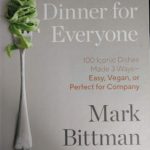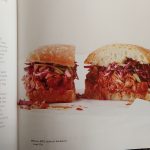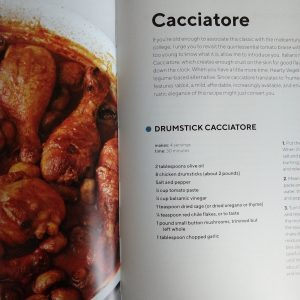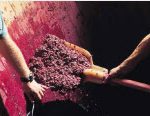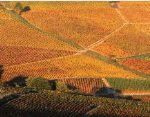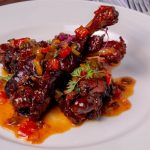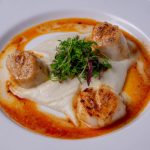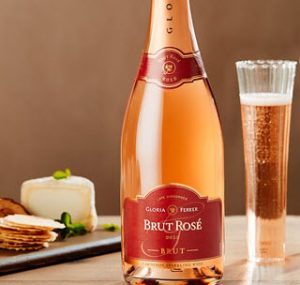Celebrated early birthday and Valentine’s Day last night at the one-of-a-kind Heritage Restaurant and Caviar Bar, 2700 W. Chicago. Seeing that it’s located in the heart of Chicago’s Ukrainian Village neighborhood, you might be tempted to dismiss it. “That couldn’t be a good place for high-end menu items. It’s too far out,” you might think.

If you’re looking for super fancy, mink-coat-worthy ambience, look elsewhere, though you won’t be embarrassed no matter how you dress. But if you’re looking for tasty treats served with unique accompaniments and top-drawer caviar service in a funky, laid-back atmosphere with relaxed, cheerful, and knowledgeable servers, come out and try Heritage.
An appetizer selection encompassed a plate of hearty house-made brown bread with a small crock of butter rosette, crispy/crunchy house-made potato chips, and several thick slabs of some of the most delicious pickles I’ve tasted in a long time. Another option is a lovely 2-ounce grilled, juicy ground beef slider, topped with a tiny fried quail egg and served on a rich, tasty bun – the perfection of which begged to be spared the application of pedestrian condiments like ketchup and mustard.
Another appetizer was a unique combination of duck and crab with pickled cabbage, deep-fried in a huge egg roll wrapper. This may be what some would call an acquired taste.
Then came the piece de resistance: the caviar service. It arrived in a special caviar-serving device that included six small glass dishes arranged on a silvery metal carrier – five dishes filled with different types of caviar and one dish of creme fraiche. Alongside this was a small plate with six indentations (not unlike a miniature Passover Seder plate) that contained small amounts of: egg yolk, egg white, fresh dill, fresh parsley, red onion – all finely chopped – and some capers. We each received our own miniature pearlized spoonula for dipping and spreading the precious roe and for scooping up the accompaniments. After one of our experienced companions explained it, we all thoroughly enjoyed the ritual. A couple of us expressed that we’d not enjoyed previous encounters with caviar nearly as much.
Our servers were exceptionally gracious and good-natured. When one of us spoke of a dental issue and asked if there was some softer bread available, our server said she’d consult with the chef. She soon returned with the message the chef was making her her very own private beignet. Sacre bleu! It arrived warm, though quite late. Still it was welcome and seemed like a good substitute for dessert with its light sprinkle of cinnamon sugar topping.
When we saw another server going by with a trayful of small beautiful glasses with translucent red liquid inside and one of those pearlized spoons on top of each, we had to ask. She said it was their own beet-infused vodka with “a bump of caviar.” Of course we couldn’t resist and ordered one apiece. Caviar first – let it melt in your mouth. Then enjoy the beet-infused vodka chaser. A profoundly successful ending to our Heritage adventure. Caviar lovers, who needs dessert? – though Heritage does offer a few options.
Go see what they’re up to next at Heritage. You may be surprised and will likely be delighted.


